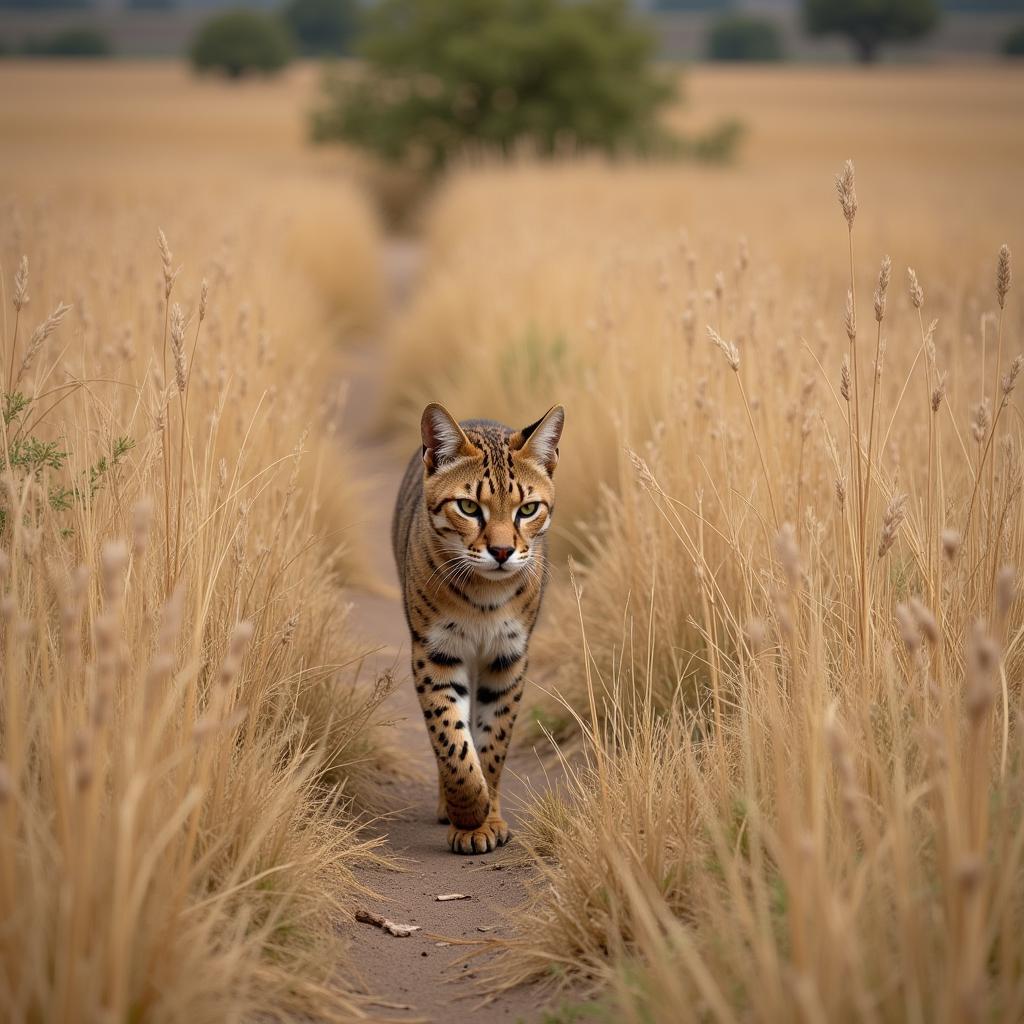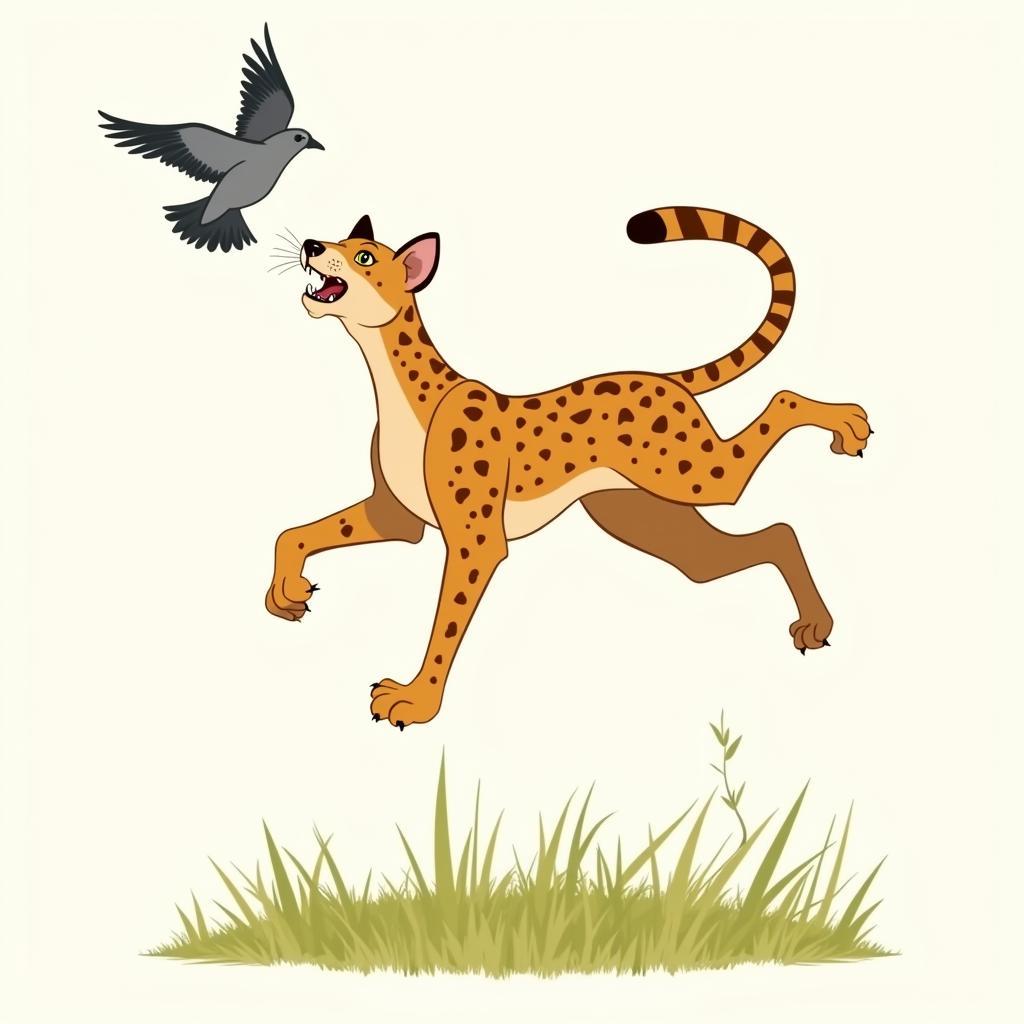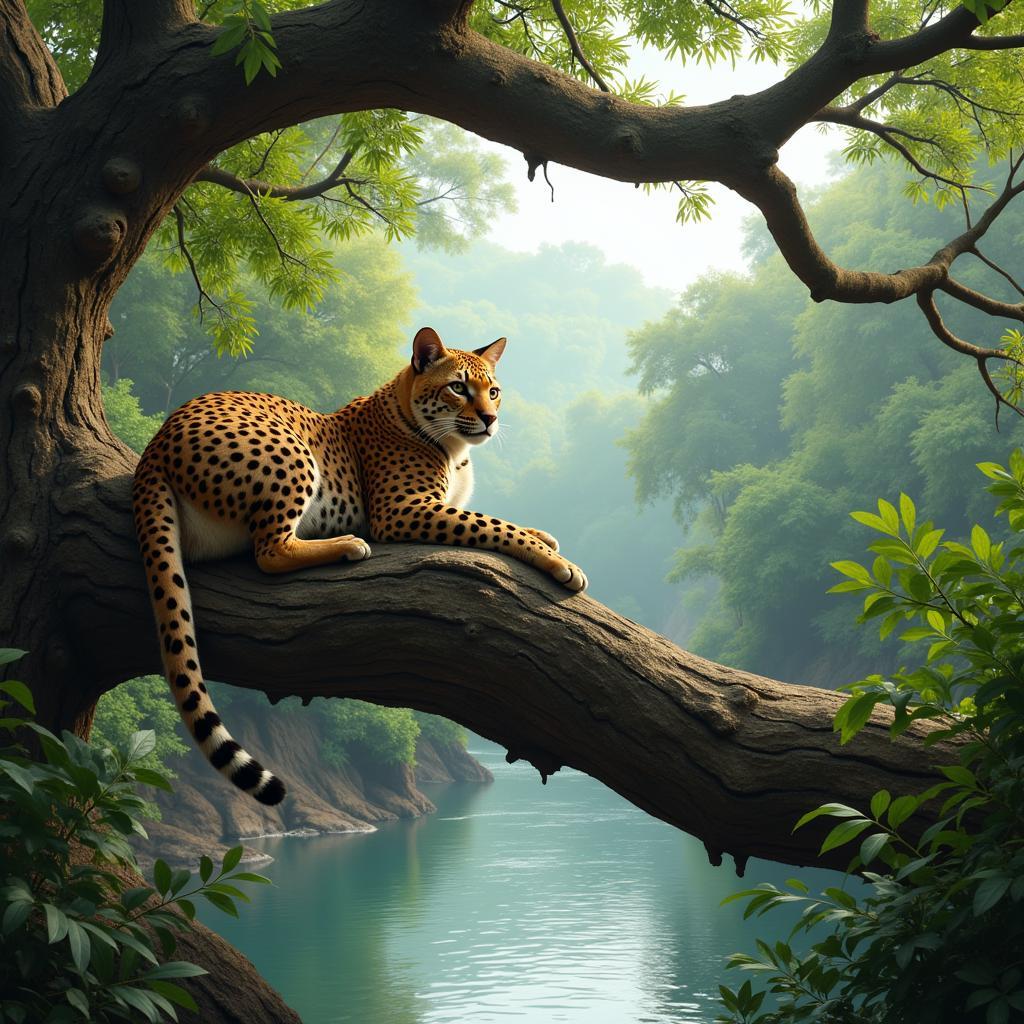Unveiling the Mystery: The Enigmatic African Jungle Cat
The African jungle cat, a creature often shrouded in mystery, roams the diverse landscapes of Africa with an air of untamed beauty. These aren’t your typical house cats; they’re wild, elusive, and perfectly adapted to their environment. Join us as we delve into the captivating world of the African jungle cat, exploring their lives, habits, and the challenges they face.
A Closer Look: African Jungle Cat Characteristics and Habitat
Imagine a feline a bit larger than your average house cat, with long legs, a slender body, and strikingly large ears. That’s the African jungle cat, also known as the swamp cat, reed cat, or scientifically, Felis chaus. Their coat, ranging from sandy brown to reddish-grey, provides excellent camouflage in their natural habitat.
 African jungle cat camouflaged in grassland
African jungle cat camouflaged in grassland
These adaptable felines are found across a wide range of habitats, from wetlands and marshes to grasslands and forests, primarily near water sources. Their range extends across Africa, the Middle East, and parts of Asia, showcasing their adaptability to various climates and terrains.
The Life of a Hunter: African Jungle Cat Diet and Behavior
The African jungle cat is a solitary hunter, most active at dawn and dusk. Their diet primarily consists of small mammals, birds, reptiles, and amphibians, which they skillfully stalk and ambush with impressive agility. Their keen eyesight and hearing, coupled with their stealthy movements, make them formidable predators.
 African jungle cat hunting a bird
African jungle cat hunting a bird
While they generally avoid humans, habitat loss and human encroachment are increasing interactions, leading to potential conflicts. Understanding their behavior and ecological role is crucial for promoting coexistence and conservation.
Navigating Threats: Conservation Status and Challenges
The African jungle cat, while not currently endangered, faces numerous threats, including habitat loss due to agriculture and development, hunting for their fur, and human-wildlife conflict. Conservation efforts are crucial for ensuring the long-term survival of this remarkable feline.
 African jungle cat resting in a tree
African jungle cat resting in a tree
Protecting wetlands, promoting responsible land management practices, and raising awareness about the importance of these creatures are essential steps towards securing their future.
In Conclusion: Appreciating the African Jungle Cat
The African jungle cat, with its captivating presence and vital role in the ecosystem, deserves our admiration and protection. By learning about their lives, challenges, and the ways we can contribute to their conservation, we can help ensure that these magnificent creatures continue to thrive in the wild for generations to come.
For support, please contact us at Phone Number: +255768904061, Email: kaka.mag@gmail.com or visit our address: Mbarali DC Mawindi, Kangaga, Tanzania. We have a 24/7 customer support team.

